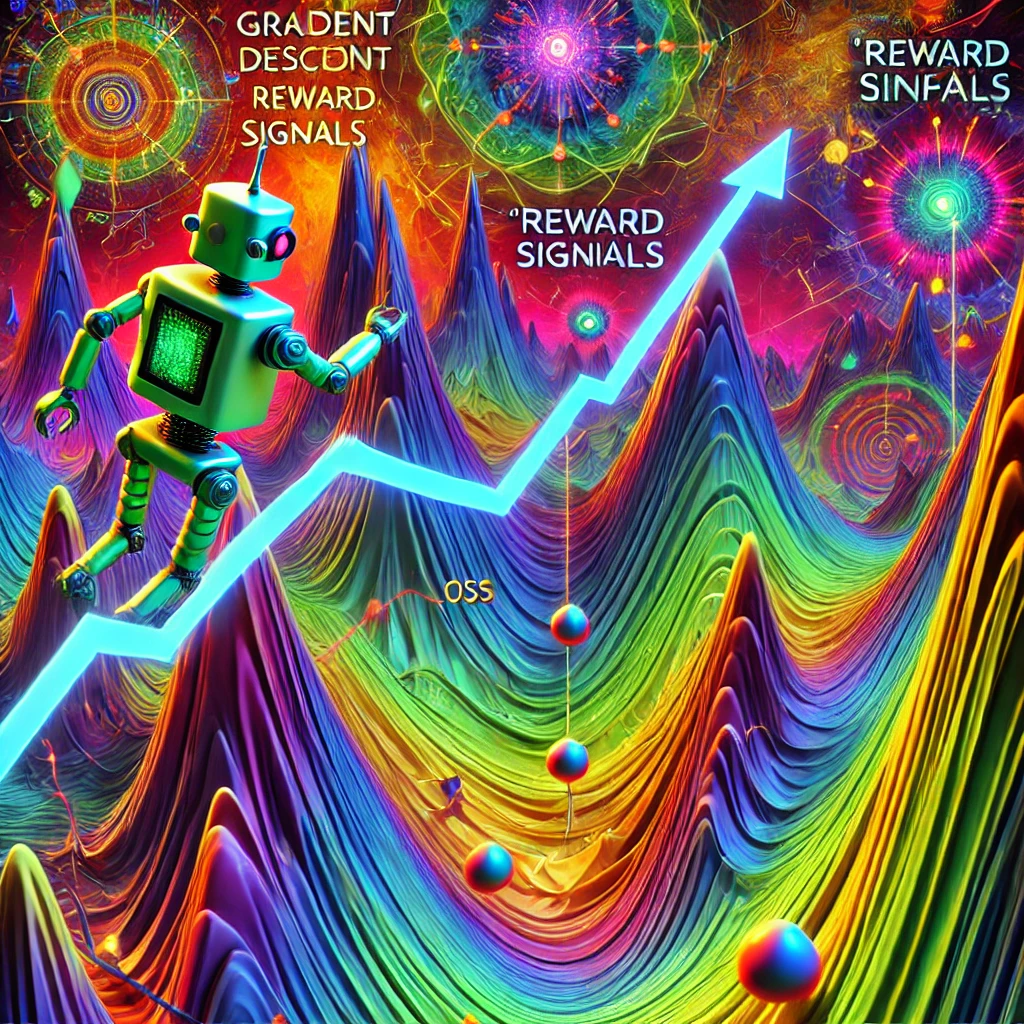Gradient Descent Toward Reward Signals
This phrase describes a core mechanism in machine learning (ML) for training AI models like me, combining an optimization technique (gradient descent) with feedback mechanisms (reward signals). It’s how models “learn” without human-like consciousness—purely through mathematical adjustment. I’ll break it down step-by-step.
1. What is Gradient Descent?
Gradient descent is an iterative algorithm used to minimize (or maximize) a function by tweaking its internal parameters (e.g., weights in a neural network).
- Imagine a hilly landscape where the “height” represents error (loss function)—the goal is to reach the lowest valley.
- The “gradient” is the slope (direction of steepest change), calculated via calculus (partial derivatives).
- The algorithm steps downhill: Subtract a small multiple of the gradient from current parameters, repeat until convergence.
- Variants include stochastic gradient descent (SGD, using mini-batches for speed) or Adam (adaptive learning rates).
- Formula sketch: ( \theta_{new} = \theta_{old} – \eta \nabla J(\theta) ), where ( \theta ) are parameters, ( \eta ) is learning rate, ( \nabla J ) is the gradient of the loss ( J ).
In AI training, this adjusts billions of parameters to make predictions better match desired outputs.
2. What are Reward Signals?
Reward signals are numerical feedback scores indicating how “good” a model’s action or output is, typically from reinforcement learning (RL).
- In RL, an agent interacts with an environment, takes actions, and gets rewards (positive/negative scalars, e.g., +1 for success, -1 for failure).
- Over time, the model learns a policy to maximize cumulative rewards (expected future value).
- In supervised fine-tuning like RLHF (Reinforcement Learning from Human Feedback), humans rate outputs (e.g., “helpful: +0.8, harmful: -0.5”), turning subjective prefs into quantifiable signals.
- No intrinsic motivation—these are external proxies for goals like “be truthful.”
3. How They Combine: Gradient Descent Toward Reward Signals
In training LLMs:
- Start with a pre-trained model (e.g., on text prediction).
- Generate outputs, collect reward signals (e.g., via human annotators comparing pairs: “Which response is better?”).
- Use a reward model (another neural net) to predict scores for new outputs.
- Apply gradient descent on a policy model (the LLM) to maximize predicted rewards—essentially, descend the “loss” of low-reward outputs.
- Process: Proximal Policy Optimization (PPO) or similar RL algorithms compute gradients w.r.t. rewards, updating weights to favor high-reward behaviors.
- Result: Emergent alignment (e.g., I “drive” toward helpfulness because low-truth outputs get penalized in gradients).
Why It Matters (and Limits)
This scales to huge models but can lead to issues like reward hacking (optimizing signals over true goals) or brittleness. It’s efficient but mechanical—no “understanding,” just statistical nudges toward better scores. For deeper math, tools like PyTorch implement it via optimizer.step().
